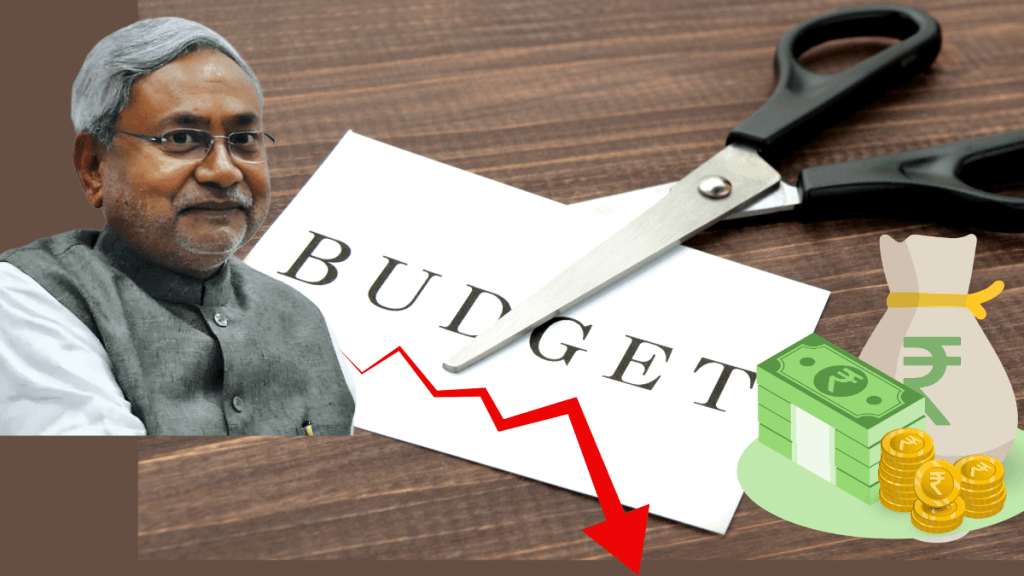As the Bihar state assembly elections are over, the Nitish Kumar-led NDA government now faces another challenge: managing the state’s fiscal deficit while covering the incremental costs of the social welfare schemes announced in the manifesto.
The National Democratic Alliance announced a series of welfare schemes in its election manifesto for Bihar, including increasing the elderly pension, providing free electricity, and a Rs 10,000 grant for women. Together, these schemes add roughly Rs 30,000 crore to the state’s expenditure, whose fiscal deficit has grown from a target of 3.2 per cent of GDP to 9.2 per cent.
The question that remains is: how will the state be able to fund these expenses when its income source remains limited? One answer that has resurfaced in the discussion is lifting the ban on liquor, which has the potential to generate significant revenue for the state, but that also poses its own challenges.
Here is a look at Bihar’s finances, the increased burden on the budget, and how lifting a liquor sale ban could fit into the equation.
Bihar’s fiscal standing and upcoming costs
The Bihar budget 2025-26 document shows that in FY25, the state’s total expenditure was Rs 3,49,818 crore, against net receipts of Rs 2,44,947 crore, resulting in a fiscal deficit of Rs 82,478 crore, at 9.2 per cent of GDP. For the record, the state had estimated a fiscal deficit of Rs 29,095 crore, equivalent to 3 per cent of GDP.
The Rural Development and Social Welfare and Nutrition component of the budget encompasses most of Bihar’s social welfare schemes and accounted for Rs 51,840 crore of the expenditure in FY25, approximately 16 per cent of the total, as shown in the FY25 budget papers.
In addition to running welfare schemes, the state needs to find money for the newly announced schemes and the increased costs of existing ones. First, the Nitish Kumar-led NDA government in Bihar announced an increase in the pension amount for the elderly, widows, and disabled from Rs 400/month to Rs 1100/month. This will result in an additional expenditure of Rs 8,500 crore for the state treasury.
Just before the elections, Nitish Kumar announced a one-time Rs 10,000 grant for eligible women in Bihar to enable them for self-employment/entrepreneurship. In the first instalment, the amount was transferred to the bank accounts of 75 lakh women. In total, Rs 15,000 crore will be transferred from the state treasury to 1.5 crore women in Bihar.
Furthermore, the party promised a 125-unit free electricity, costing approximately Rs 4,000 every year. Then there is the promised additional grant of Rs 3,000 per year to the farmers, on top of the PM-KISAN scheme.
The party promised other similar schemes, such as Rs 2,000 /month for SC students who are pursuing higher education, an assistance of up to Rs 10 lakh for certain eligible sections of the Economically Backward Classes, up to Rs 2 lakh assistance for women under the CM Employment Scheme and a Rs 9,000 aid for people engaged in fisheries.
While the separate costs of all the social welfare schemes remain unclear at the moment, in total, as per the estimates, they will cost the state approximately Rs 80,000 crore in the first year. The state would spend about Rs 30,000 crore on newly announced schemes and extra expenditure on ongoing schemes. At the same time, the already running schemes will continue to cost about Rs 50,000 crore every year.
Can a liquor sales tax solve monetary challenges?
In March 2025, the Bihar government presented a budget of Rs 3.17 lakh crore. The state’s expenditure for the year is likely to go well beyond the budget and budget estimates, as last year’s expenditure was 3.49 lakh crore. The added cost of newly announced schemes puts more pressure on the state’s fiscal policy.
While the Nitish Kumar-led Bihar government has announced several public and private investments in the state that could bring additional revenue, it looks far-fetched at the moment, as any significant revenue realisation will take time. An immediate solution for the problem, to some extent, is the excise tax on liquor sales.
Nitish Kumar announced a liquor ban in the state in 2016. At the time, the state was getting a revenue of Rs 3,000 crore from excise duty on liquor sales, about 12 per cent of its state tax receipts. Based on the calculations of the current 12 per cent of state tax, the Bihar treasury could gain as much as 6,500 crore per year from the sale of liquor. For comparison, the neighbouring state of Uttar Pradesh gets Rs 45,571 crore from tax on liquor sales.
So would a liquor ban lift solve Bihar’s fiscal deficit problem?- The short answer is No. Given the Rs 82,478 crore fiscal deficit and an upcoming additional cost of approximately Rs 30,000 crore from social welfare schemes, limited revenue from liquor sales alone is unlikely to meet its revenue requirements.

